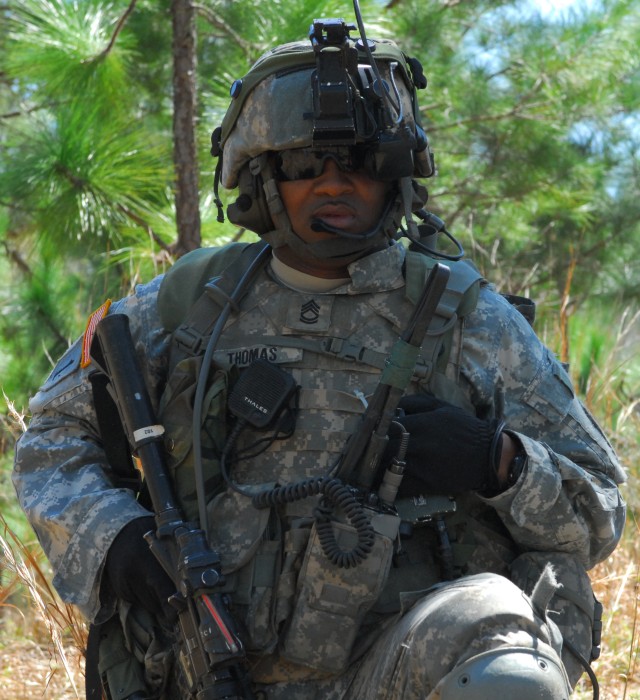The Maneuver Battle Lab completed its limited objective experiment with the Land Warrior System March 20.
Soldiers in A Company, 1st Battalion, 29th Infantry Regiment, also known as the Experimentation Force began the experiment March 2. They completed five missions at three different levels: not using the Land Warrior System, using it as only at the squad level and using it at the squad and team level.
"What we're trying to do is quantify the effectiveness of that unit conducting tactical operations with those three different alternatives," said Brian Kornett, project officer for the experiment.
Land Warrior is designed to give leaders better situational awareness on the battlefield and an enhanced ability to command and control their respective elements, Kornett said.
All the computers are integrated into the body armor, which includes a radio, navigation system and helmet-mounted display, so Soldiers can see the map or imagery of a certain location.
One thing the Soldiers say they really like is their ability to see where everybody is on the field, Kornett said.
"As they're dispersed, they might not be able to see each other physically on the ground, but they can pull their HMD down and see where their guys are in real time," he said.
Each mission was based on operations that 4th Battalion, 9th Infantry Regiment, out of Fort Lewis, Wash., faced in Iraq. At the end of the missions, EXFOR Soldiers provided feedback the Maneuver Battle Lab will compile and forward to the
TRADOC Analysis Center at White Sands, N.M.
After completing a time-sensitive mission Friday, platoon sergeant Sgt. 1st Class David Thomas said using the Land Warrior System helped him coordinate his platoon's movements. On a 10-digit grid, he could see where all his elements were in relation to the target.
"Accuracy is critical," Thomas said. "It helps with completing the mission when the higher command can pinpoint all elements on the battlefield."
The downside to the system was its bulkiness, he said, but features that allowed him to measure distance and make a trail of lighted "bread crumbs" for Soldiers to follow on the screen offset the inconvenience of added weight.
Sgt. Christian Rincon, a team leader in EXFOR, said he thinks the system should be issued at the team level.
"Depending on the mission at hand, having the screen really helps," he said. "You know where your positions are at, you know when your guys are set, and you can see it. If your squad leader calls you and says, 'I need you to move here,' you can just look at your screen, he puts a graphic out there for you, and you know exactly where to go."
Most importantly, Land Warrior helps Soldiers avoid friendly fire, said platoon leader 2nd Lt. John Dills, EXFOR.
"In the heat of battle, guys will call out their position - 'I'm 100 meters away from this obstacle,' but you don't know which direction and you don't really know the distance," Dills said.
"What the Land Warrior System does is it populates an icon for you to actually see where your individuals are, so it gives you a better visual picture of where everyone is at. You know where to shift your small arms fire, where you can and can't call for fire. That helps you avoid fratricide. It gives you the ability to save lives."
The system also allowed the platoon, split into two groups attacking from opposite sides, to assault the objective at the same time, he said.
"I think through the whole experiment we identified what works and what we'd like to see," Dills said. "Just like any new technology, it can always be made better."
"Right now, we're really just testing the technology to see if it's worthwhile and something the Army wants, and I would say most definitely yes, this is something the Army wants."


Social Sharing